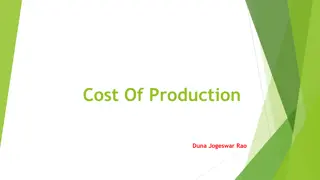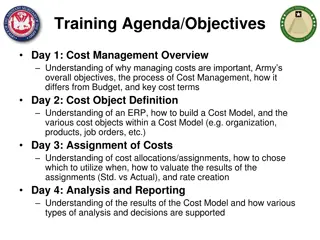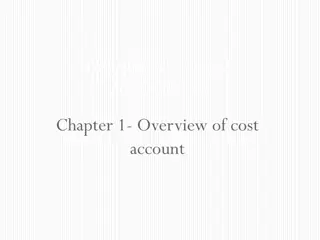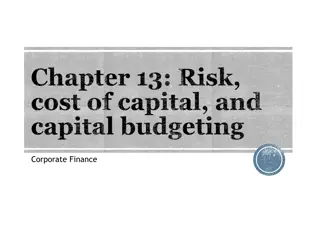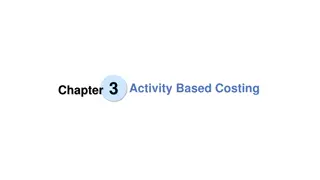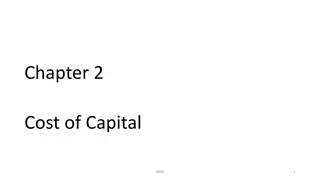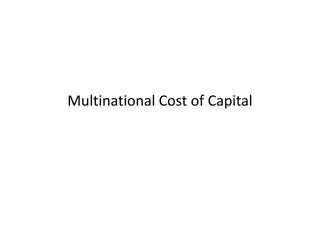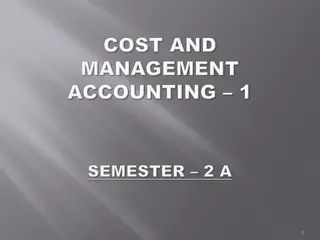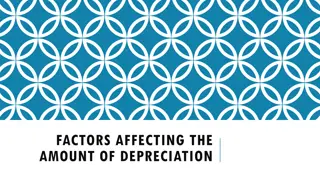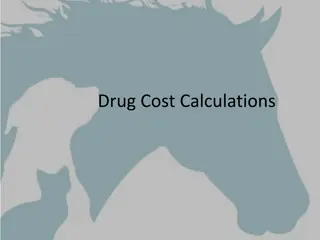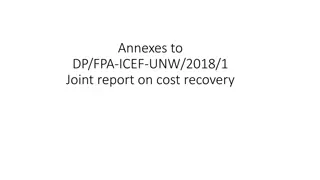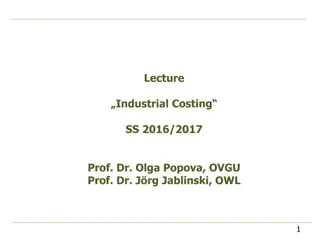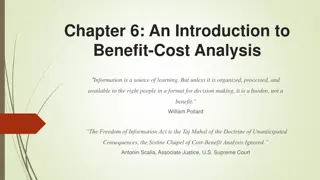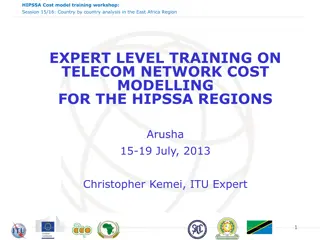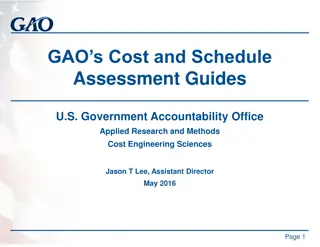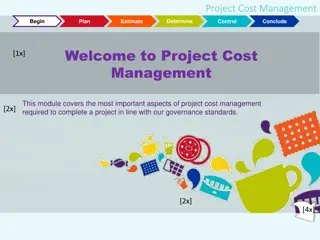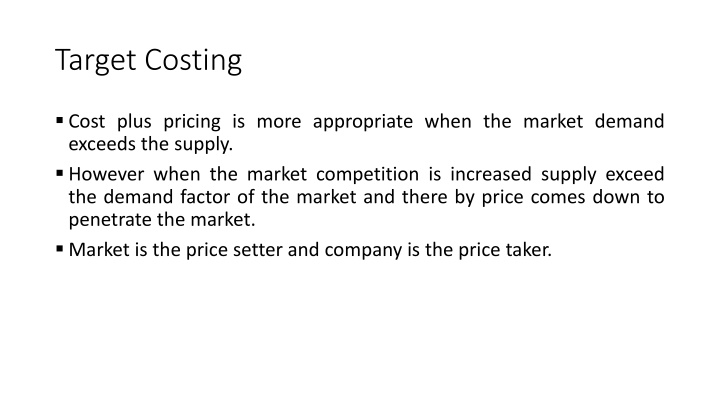
Target Costing in Market Pricing Strategies
Learn about target costing and its application in pricing strategies based on market demand and competition. Explore the cost-plus pricing method when demand exceeds supply and the impact of increased competition on pricing decisions. Discover the key concepts, phases, and strategies essential for achieving target costs in product development.
Download Presentation

Please find below an Image/Link to download the presentation.
The content on the website is provided AS IS for your information and personal use only. It may not be sold, licensed, or shared on other websites without obtaining consent from the author. If you encounter any issues during the download, it is possible that the publisher has removed the file from their server.
You are allowed to download the files provided on this website for personal or commercial use, subject to the condition that they are used lawfully. All files are the property of their respective owners.
The content on the website is provided AS IS for your information and personal use only. It may not be sold, licensed, or shared on other websites without obtaining consent from the author.
E N D
Presentation Transcript
Target Costing Cost plus pricing is more appropriate when the market demand exceeds the supply. However when the market competition is increased supply exceed the demand factor of the market and there by price comes down to penetrate the market. Market is the price setter and company is the price taker.
Underlining concept of target costing Market price- desired profit margin= Target cost
Back ward analysis of cost Current situation Market price 22.00 DM 10.00 Margin (8.00) DL 7.00 Target cost 14.00 POH 3.00 Cost 20.00 +Margin 40% 8.00 Selling price 28.00
Early cost planning Chartered Management Accountant USA define .
How to achieve the target cost Product innovation Process innovation Design innovation Resources innovation Value chain analysis
Life cycle costing Target costing places great emphasis on controlling costs by good product design and production planning, but those up-front activities also cause costs. There might be other costs incurred after a product is sold such as warranty costs and plant decommissioning
Life cycle costing Phase Type of cost Design Research, development, design and tooling Manifacturering Material, labour, overheads, machine set up, inventory, training, production machine maintenance and depreciation Operation Distribution, advertising and warranty claims End of life Environmental clean-up, disposal and decommissioning
Example A company is planning a new product. Market research information suggests that the product should sell 10,000 units at $21.00/unit. The company seeks to make a mark-up of 40% product cost. It is estimated that the lifetime costs of the product will be as follows: Design and development costs $50,000 Manufacturing costs $10/unit End of life costs $20,000 Required (a) What is the target cost of the product? (b) What is the original lifecycle cost per unit and is the product worth making on that basis?
Kaizen-Process of continues improvement One of the most notable features of kaizen is that big results come from many small changes accumulated over time. However this has been misunderstood to mean that kaizen equals small changes. In fact, kaizen means everyone involved in making improvements. While the majority of changes may be small, the greatest impact may be kaizens that are led by senior management as transformational projects, or by cross- functional teams as kaizen events. KAI=Change ZEN= GOOD 11
The Deming Cycle Hill, T. 2005, Operations Management, 2ndEdition , Palgrave Macmillan
Kaizen Kaizen Costing Costing The process of cost reduction during the manufacturing phase of an existing product. Product cost . Current year cost base. . Cost base for next year. 31/3/2015 01/07/2016
Kaizen Costing The process of cost reduction during the manufacturing phase of an existing product. Product cost . Kaizen goal cost-reduction amount. } . 3/31/0x 3/31/0x

